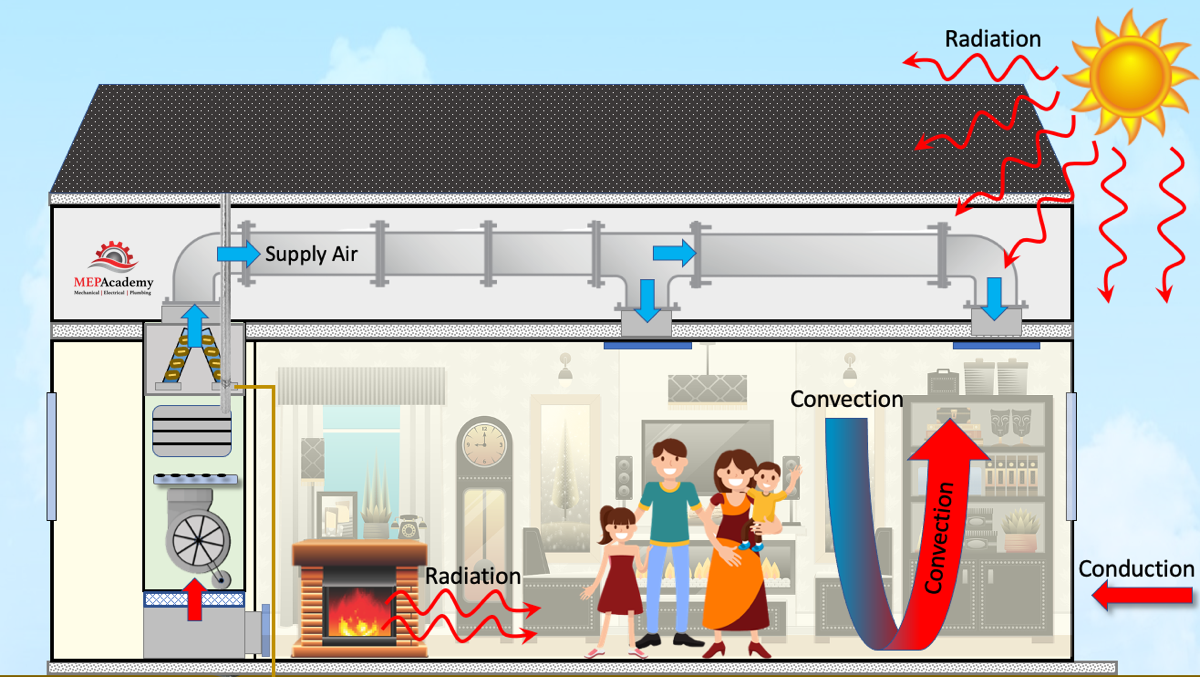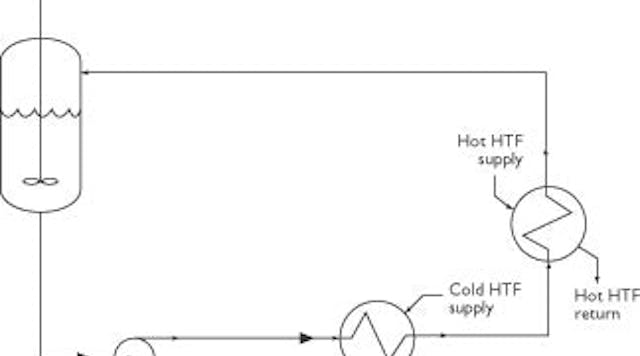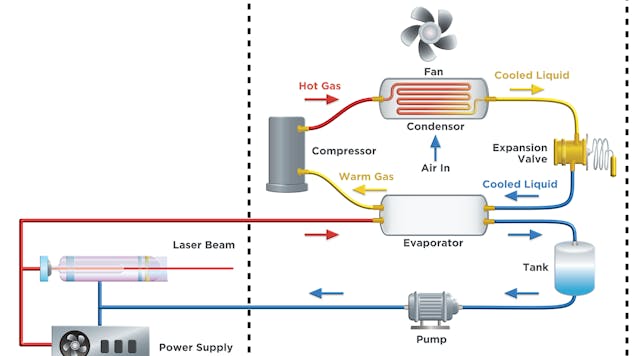A Comprehensive Guide to Selecting the Right Heat Transfer Solutions for Your Demands
Picking the ideal Heat transfer system is crucial for operational efficiency. Various systems provide to different requirements, affected by factors such as temperature array and liquid type. Understanding the concepts behind Heat transfer, such as conduction, radiation, and convection, is vital. Additionally, assessing power sources and upkeep techniques can impact long-term performance. A closer assessment of these factors to consider exposes just how to tailor a system to certain needs. What should one prioritize in this facility decision-making procedure?
Understanding Heat Transfer: Secret Ideas and Principles
Heat transfer may appear like a straightforward principle, it includes a range of concepts that are essential for efficient system design - DVS Heat Transfer Systems. Recognizing these concepts is important for designers and developers that aim to enhance thermal efficiency in numerous applications. Conduction, for instance, entails the transfer of Heat via strong materials, while convection refers to the activity of Heat within liquids. Radiation, an additional key concept, defines just how Heat can be transferred with electromagnetic waves. Each of these mechanisms plays a crucial function in establishing how energy relocates within a system. By completely grasping these concepts, specialists can make enlightened choices, making certain that Heat transfer systems operate efficiently and meet the certain needs of their applications
Kinds Of Heat Transfer Solutions: An Introduction
Recognizing the principles of Heat transfer prepares for exploring the numerous kinds of Heat transfer systems readily available. Heat transfer systems can be categorized primarily right into three types: convection, transmission, and radiation. Conduction involves Heat transfer via strong materials, depending on straight get in touch with in between bits. Convection, on the various other hand, occurs in fluids (liquids and gases) where the motion of the fluid itself helps with Heat transfer. Radiation entails the transfer of Heat through electro-magnetic waves and does not need a tool, permitting it to happen in a vacuum cleaner. Each kind of system has unique qualities and applications, making it vital for people and organizations to carefully evaluate their certain needs when selecting one of the most suitable Heat transfer solution.
Applications of Heat Transfer Equipments in Numerous Industries
Heat transfer systems play a necessary function throughout numerous sectors, impacting effectiveness and item top quality. In industrial production processes, they promote exact temperature level control, while in food and beverage processing, they assure safety and security and preservation. Additionally, a/c and environment control systems rely greatly on efficient Heat transfer to keep comfy settings.
Industrial Production Processes

Various industrial production processes rely heavily on efficient Heat transfer systems to make best use of efficiency and boost item quality. In markets such as metalworking, Heat exchangers play an essential function in keeping ideal temperature levels throughout welding, casting, and building. These systems guarantee uniform Heat circulation, which is important for attaining wanted material residential properties. In the chemical manufacturing market, Heat transfer systems promote precise temperature level control during responses, impacting yield and safety and security. Moreover, in textile production, effective Heat management is essential for dyeing and completing procedures, influencing color consistency and textile high quality. By selecting suitable Heat transfer innovations, producers can enhance energy effectiveness and decrease operational prices, inevitably resulting in a much more sustainable and affordable manufacturing setting.
Food and Beverage Handling
Reliable Heat transfer systems are equally vital in the food and beverage handling sector, where maintaining suitable temperature levels is important for food safety and top quality. These systems play an important function in processes such as pasteurization, sanitation, and cooking, ensuring that items are safe for intake and retain their nutritional worth. Heat exchangers, as an example, successfully transfer Heat in between liquids, optimizing energy use while reducing temperature level variations. Additionally, refrigeration systems are basic for protecting perishable things and prolonging life span. The option of Heat transfer innovation straight impacts functional performance and item integrity, making it crucial for food and drink makers to choose the appropriate systems tailored to their details handling requirements. This cautious selection ultimately adds to customer fulfillment and food safety and security.

A/c and Climate Control
While lots of sectors depend on Heat transfer systems for efficiency, HVAC (Heating, Air Flow, and Cooling) plays an essential function in keeping indoor climate control across numerous setups. These systems make use of Heat transfer concepts to manage humidity, air, and temperature high quality, guaranteeing convenience and safety and security in domestic, business, and commercial settings. Correctly created cooling and heating systems enhance energy effectiveness, minimize functional expenses, and reduce environmental impact. In business buildings, for instance, efficient environment control adds to worker efficiency and customer complete satisfaction. In industrial applications, heating and cooling systems aid preserve perfect conditions for tools procedure and product preservation. Picking the appropriate Heat transfer system is important for conference certain environment control needs and attaining general system efficiency.
Reviewing Energy Sources for Heat Transfer Equipments
In reviewing power resources for Heat transfer systems, a contrast of renewable energy choices and nonrenewable fuel source factors to consider is vital. Sustainable sources, such as solar and wind, offer lasting options that can reduce ecological influence. On the other hand, nonrenewable fuel sources remain common because of their established infrastructure and energy thickness, motivating a mindful evaluation of both options.
Renewable Power Options

Nonrenewable Fuel Source Considerations
Assessing fossil fuel considerations is vital for the efficiency and sustainability of Heat transfer systems. Nonrenewable fuel sources, such as gas, oil, and coal, are conventional power resources that supply significant Heat outcome, making them prominent selections for commercial and domestic applications. Their ecological impact, consisting of greenhouse gas emissions and resource deficiency, increases worries. When selecting a heat transfer system, it is vital to assess the schedule, price, and governing variables related to these gas. Furthermore, the performance of nonrenewable fuel source systems have to be taken into consideration, as higher efficiency can alleviate some environmental downsides. Ultimately, a balanced strategy weighing performance and sustainability can assist decision-makers toward one of the most proper Heat transfer remedy for their certain requirements.
Aspects to Think About When Choosing a Warm Transfer System
Choosing an ideal Heat transfer system requires mindful factor to consider of numerous factors that can substantially impact efficiency and performance. One crucial variable is the operating temperature variety, which dictates the products and design appropriate for the application. Additionally, the kind of fluid utilized in the system-- whether gas or fluid-- affects Heat transfer efficiency and compatibility. The system's dimension and ability should line up with the certain needs of the procedure to prevent inadequacies. Energy resource schedule is likewise necessary, affecting operating costs and sustainability. Furthermore, the installation environment, including room restraints and access for maintenance, plays a substantial duty in system choice. Regulatory compliance and safety criteria should be considered to assure the system fulfills all legal needs.
Upkeep and Performance Optimization for Heat Transfer Systems
Preserving Heat transfer systems is essential for ensuring maximum effectiveness and long life. Normal maintenance tasks, such as cleaning Heat exchangers and examining insulation, help avoid effectiveness losses due to fouling and thermal linking. In addition, checking system parameters, including pressure and temperature, enables early discovery of anomalies, lessening downtime and pricey repairs. Applying a precautionary upkeep routine can enhance performance and prolong the life expectancy of parts. Moreover, updating to advanced control systems can enhance operational efficiency by adjusting to differing problems and loads. By focusing on upkeep and performance optimization, operators can attain reduced power intake, reduced my company operational costs, and boosted general system integrity, inevitably bring about far better resource utilization and a more lasting procedure.
Future Fads in Heat Transfer Technologies
As markets significantly focus on sustainability and energy performance, future fads in Heat transfer innovations are readied to undertake considerable improvements. Innovations such as advanced materials, consisting of carbon nanotubes and nanofluids, guarantee boosted thermal conductivity and performance. Additionally, the combination of renewable resource resources right into Heat transfer systems is obtaining momentum, advertising environment-friendly remedies. Smart innovations, consisting of IoT sensors, are expected to reinvent tracking Go Here and control, enabling real-time data evaluation for maximized performance. Moreover, the growth of compact and modular systems will certainly facilitate much easier installment and upkeep, providing to diverse applications. These innovations indicate a change in the direction of even more lasting, efficient, and adaptable Heat transfer options, straightening with worldwide power goals and environmental criteria.
Regularly Asked Inquiries
What Are the Environmental Effects of Heat Transfer Solutions?
The ecological impacts of Heat transfer systems can consist of greenhouse gas discharges, energy usage, and potential thermal contamination. In addition, incorrect disposal of ineffectiveness and materials can add to source exhaustion and environment interruption.
How Do I Determine the Cost-Effectiveness of a Heat Transfer System?
To compute the cost-effectiveness of a warm transfer system, one must analyze initial prices, functional expenses, upkeep needs, and energy efficiency, comparing these aspects against the expected life-span and performance of the system.
Can Heat Transfer Solution Be Made Use Of in Residential Settings?
Heat transfer systems can without a doubt be used in property settings. They supply effective heating and cooling services, making homes more comfortable while possibly lowering power expenses. Their versatility permits for numerous applications in household settings.
What Safety Regulations Relate To Heat Transfer Systems?
Safety and security policies for Heat transfer systems commonly consist of guidelines on installation, upkeep, and procedure. Conformity with regional structure codes, supplier specs, and sector standards is necessary to ensure effective and safe system efficiency in various applications.
Exactly How Do Different Materials Affect Heat Transfer Performance?

Conduction, for circumstances, involves the transfer of Heat via strong materials, while convection refers to the activity of Heat within liquids. Recognizing the principles of Heat transfer lays the foundation for checking out the various types of Heat transfer systems readily available. Heat exchangers, for instance, effectively transfer Heat between fluids, enhancing power use while decreasing temperature variations. In examining energy sources for Heat transfer systems, a comparison of eco-friendly energy choices and fossil fuel considerations is important. Steels, such as copper and light weight aluminum, conduct Heat successfully, whereas insulators like rubber and glass reduce down Heat flow.